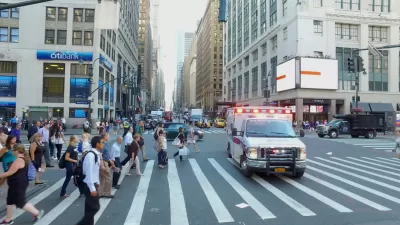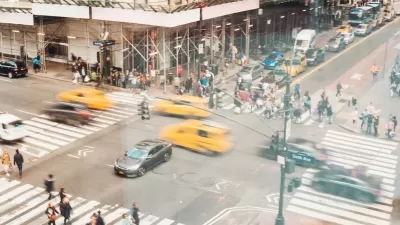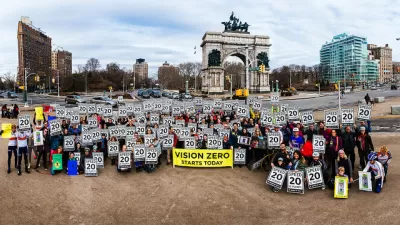It's another one of those crises within a crisis, but driving has been more dangerous during the pandemic.

Christina Goldbaum revisits one of the tragedies inside the tragedy from the pandemic during 2020: increasing numbers of traffic fatalities.
Goldbaum cites the example of New York City specifically: "243 people died in traffic crashes in New York City in 2020 — making it the deadliest year on record since Mayor Bill de Blasio introduced his signature plan to improve street safety in 2014," but the trend was evident in locations all over the country.
Given how many fewer drivers were on the road this year, the traffic fatalities of 2020 defied precedent and logic. "Economic downturns and reduced congestion typically lead to fewer fatal crashes, federal researchers say. But during the pandemic, it seemed that drivers who felt cooped up in their homes flocked to wide open streets," writes Goldbaum. New York officials cited in the article say that most fatal crashes in 2020 involved vehicles traveling at high speeds, late at night, outside the urban core of Manhattan.
The article describes the causes of these effects, but much of the evidence is circumstantial. Police did write a lot more tickets for speeding in California, New York City, and Georgia, according to evidence cited in the article, but police in Minneapolis were widely reported as decreasing traffic enforcement after nationwide protests in response to the killing of George Floyd.
The article concludes with a soundbite from Danny Harris, executive director of Transportation Alternatives, making an appeal to reject the car-centric status quo of pre-pandemic life in the United States.
It's also worth noting that with hospitals and intensive care units full all over the country, now is not a good time
FULL STORY: Why Emptier Streets Meant an Especially Deadly Year for Traffic Deaths

Trump Administration Could Effectively End Housing Voucher Program
Federal officials are eyeing major cuts to the Section 8 program that helps millions of low-income households pay rent.

Planetizen Federal Action Tracker
A weekly monitor of how Trump’s orders and actions are impacting planners and planning in America.

Ken Jennings Launches Transit Web Series
The Jeopardy champ wants you to ride public transit.

‘Minnesota Nice’ Isn’t so Nice When You Can’t Find a Place to Live
The Economic Development and Housing Challenge Program can help address the scourge of homelessness among Indigenous people.

NYC Open Streets Organizers Call for City Support
The number of open streets projects has dropped year after year as volunteer groups struggle to fund and staff them.

Crime Continues to Drop on Philly, San Francisco Transit Systems
SEPTA and BART both saw significant declines in violent crime in the first quarter of 2025.
Urban Design for Planners 1: Software Tools
This six-course series explores essential urban design concepts using open source software and equips planners with the tools they need to participate fully in the urban design process.
Planning for Universal Design
Learn the tools for implementing Universal Design in planning regulations.
Heyer Gruel & Associates PA
Ada County Highway District
Institute for Housing and Urban Development Studies (IHS)
City of Grandview
Harvard GSD Executive Education
Toledo-Lucas County Plan Commissions
Salt Lake City
NYU Wagner Graduate School of Public Service





























